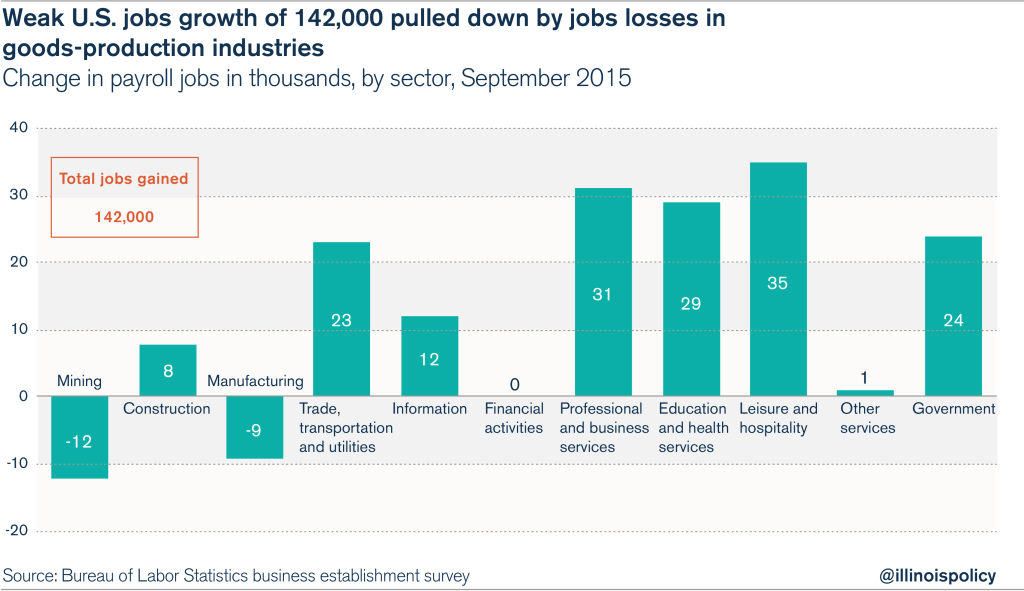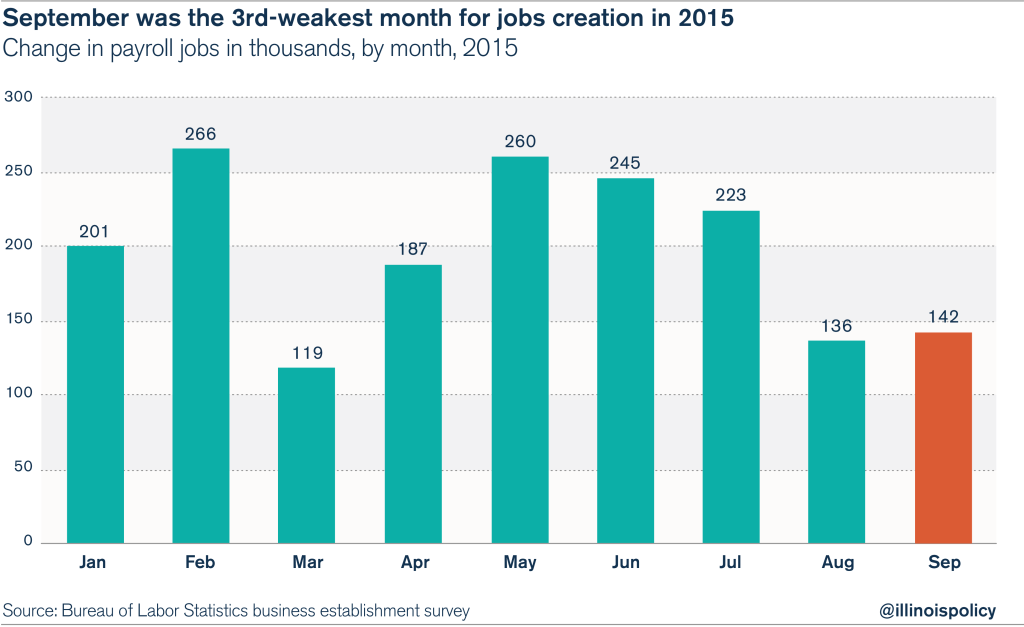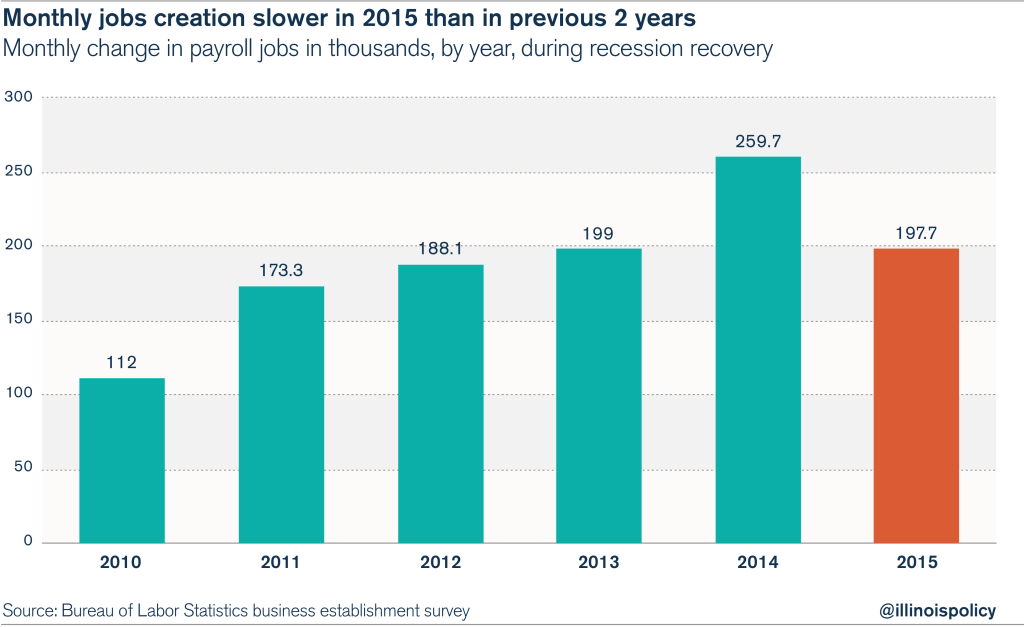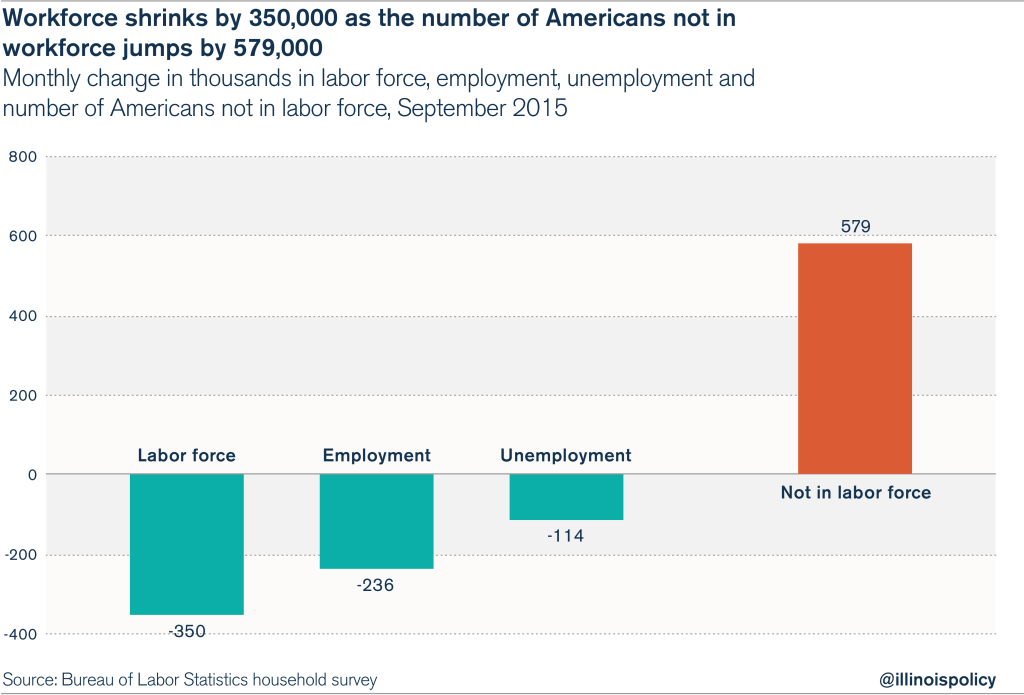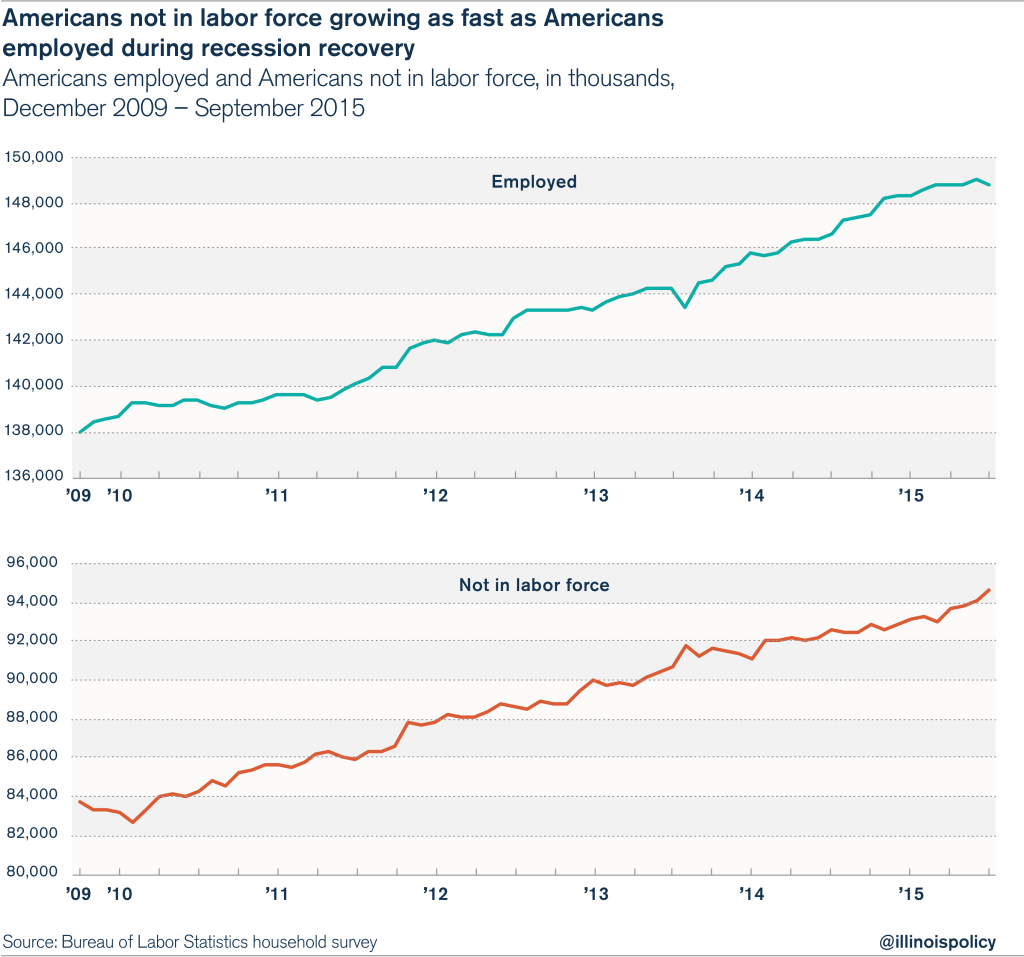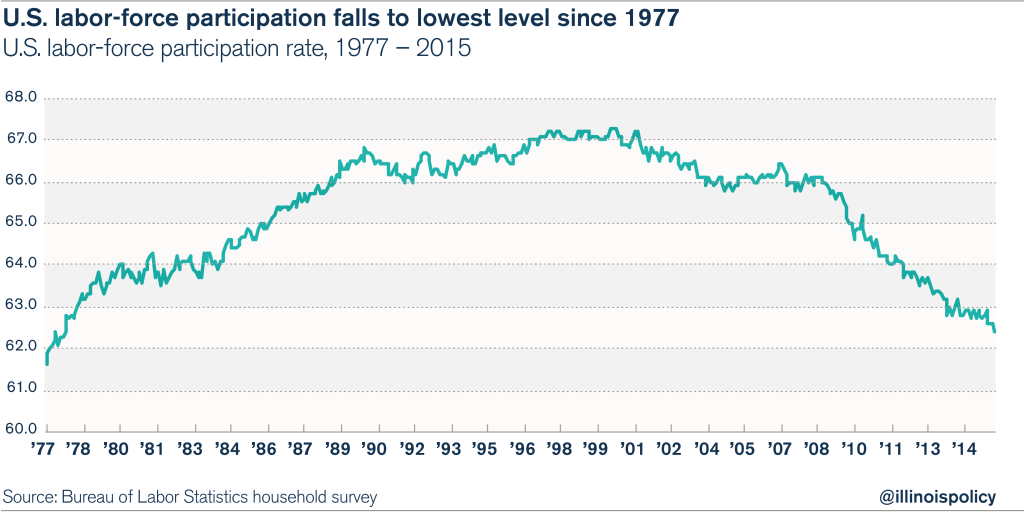Weak U.S. jobs report: Lackluster job creation, workforce contracts in September
Newly released data from the Bureau of Labor Statistics shows weak jobs gains and a shrinking U.S. workforce in September.
The U.S. economy added 142,000 jobs in September, according to the economic report from the Bureau of Labor Statistics, or BLS, released Oct. 2. The jobs report numbers fell short of market expectations of 200,000 jobs for the month. In addition, the unemployment rate remained unchanged at 5.1 percent, as the U.S. workforce shrank by 350,000 people since August. The September jobs report showed weakness across a range of indicators, suggesting that the U.S. economy could be slowing in the sixth year of recovery from the Great Recession.
Of the 142,000 jobs gained in September, 24,000 were government jobs, and 118,000 were private-sector jobs. Statistics for the goods-producing sector demonstrated widespread weakness, with job losses in mining and logging (-12,000) and manufacturing (-9,000), along with a small gain in construction (+8,000).
The service sector had gains in leisure and hospitality (+35,000); professional and business services (+31,000); education and health services (+29,000); trade, transportation and utilities (+23,000); and information (+12,000).
September was the third-weakest month for job gains this year, and the second month in a row in which the BLS jobs report showed results below market expectations. The August job gains were revised down to 136,000, and March was the weakest month of the year with an increase of only 119,000 jobs.
The Great Recession caused job losses that extended through February 2010, and since then, the U.S. economy has gained jobs every year. During the 10 months of job gains in 2010, the U.S. economy averaged only 112,000 jobs per month. The monthly rate of job gains increased to 173,300 in 2011, to 188,100 in 2012, and to 199,000 in 2013, before peaking at 259,700 jobs gained per month in 2014.
Through the first three quarters of 2015, the U.S. economy has averaged 198,000 jobs gained per month, putting the August and September job gains well below the trend for the past five years.
The BLS’ household survey showed especially weak jobs numbers for September. The U.S. labor force shrank by 350,000, as a result of the number of employed Americans declining by 236,000 and the number of unemployed Americans declining by 114,000. Meanwhile, the number of adult Americans not in the workforce grew by 579,000.
There are now 94.6 million adult Americans not in the workforce – a record high. This number has been steadily increasing, even during the recovery from the Great Recession. In fact, the number of Americans not in the workforce has grown as fast as employment. Household employment bottomed out in December 2009, and the number of employed Americans has risen by 10.8 million since then. The number of adult Americans not in the workforce has also risen by 10.8 million during the recovery.
As a result of September’s drop in the labor force, the U.S. labor-force participation rate fell to 62.4 percent from 62.6 percent, the lowest participation rate since October 1977. The decline in labor-force participation has been driven by weak employment growth and millions of Americans dropping out of the workforce.

